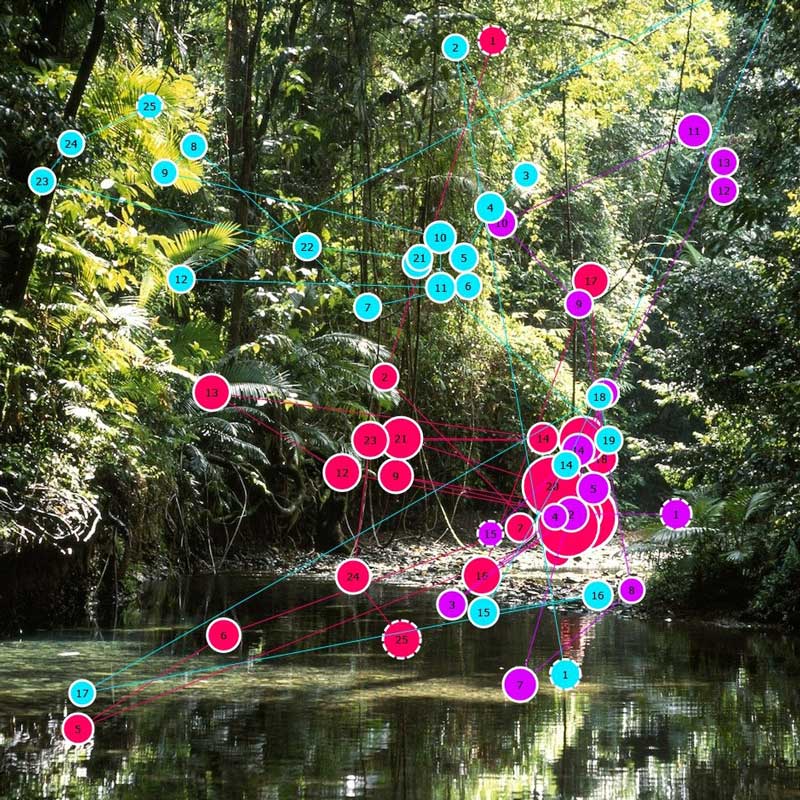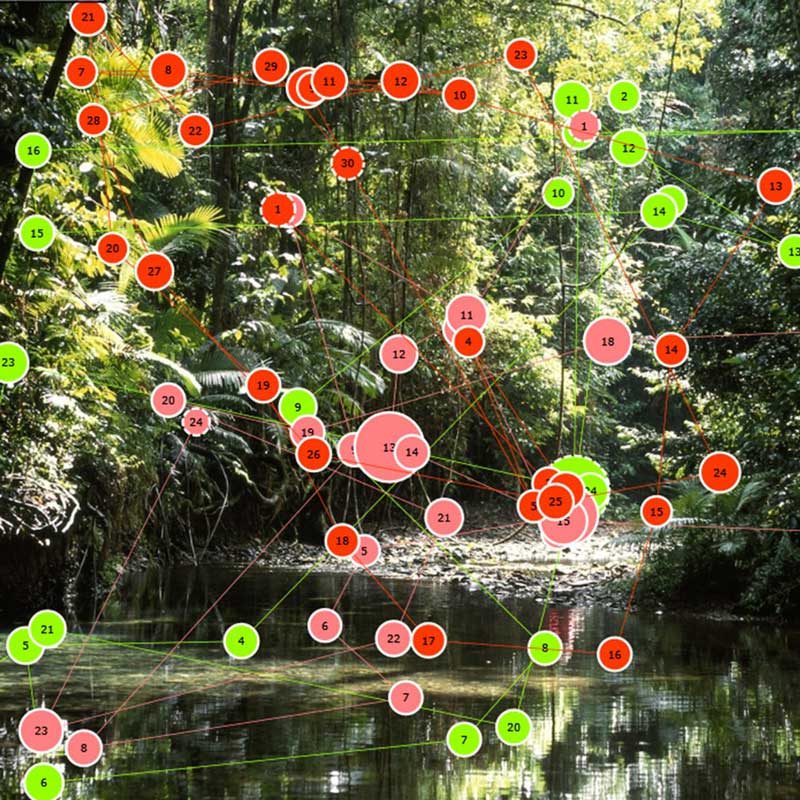Eye tracking research
Tourism relies on communicating to customers through brochures and/or websites. GIFT's eye-tracking laboratory conducts research on user design and advertising evaluation. Eye tracking provides a very precise, objective and quantitative measure of what part of a picture or image a person is looking at. It is based on tracking the pupils of the eye using infra-red light. At GIFT, we use eye-tracking technology to evaluate and improve the effectiveness of tourism advertising.
How effective is my advertisement?
A recent study used eye-tracking to see how people looked at advertisements and websites. The results are shown here as heat maps where the red areas indicate the most viewed areas. This helped to decide how to improve the layout and design.
Are there cultural differences in viewing pictures?
Eye tracking can also be used to find the places on a picture where the viewer’s eyes’ fixate. This provides a measure of attention. A study by Wang and Sparks (2015) shows that eye fixations by Chinese participants (first image) clustered towards the centre of the picture while those by Australian participants were more spread out.


Recent papers
- Scott, N., Green, C., & Fairley, S. (2015 In Press). Investigation of the use of eye-tracking to examine tourism advertising effectiveness. Current Issues in Tourism Read more
- Wang, Y., & Sparks, B. A. (2015 In Press). An Eye-Tracking Study of Tourism Photo Stimuli: Image Characteristics and Ethnicity. Journal of Travel Research. Read more
- Li, S., Walters, G., & Scott, N. (2017 Online). A Comparative Analysis of Self-Report and Psycho-Physiological Measures of Emotion in the Context of Tourism Advertising. Journal of Travel Research. Read More
Psychophysiology
Tourism creates exciting and emotional experiences. GIFT uses advanced measurement techniques to determine the degree of arousal from visual stimuli or tourist activities. When we are aroused our bodies undergo measurable changes in our heart rate, skin conductance, facial muscle activity and brain wave patterns. At the Institute, we use galvanic skin conductance and heart rate measurements to evaluate engagement.
Comparing advertisements
GIFT researchers showed four advertisements to respondents and tracked their galvanic skin conductance in real time to produce a trace of their reactions. These results enabled the size and amount of responses to advertising to be evaluated.
My beating heart
GIFT researchers, in partnership with the Heart Foundation Research Centre are investigating the utility of Heart Rate Variability to measure emotional arousal in relation to simulated experiences such as visiting the Great Barrier Reef. Our heartbeat is finely tuned to identify the types of experiences that elicit emotion, especially when used in combination with self-report and physiological measures. Eliciting emotion is an important component of not only providing a satisfying experience, but as a facilitator of pro-environmental behaviour.